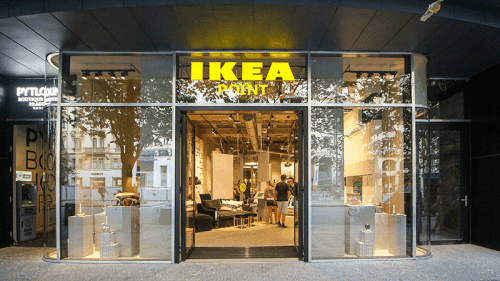At the ULI Fall Meeting, panelists discussed the shifting role of food and beverage in retail centers. Caitlin Sanford and Rachael Holloway, both commercial property managers with Stockland in Brisbane, Australia, and Jon Krieger of Bluestone Lane coffee shops in New York, explained how food, from New York to Australia, has become the big draw in retail.
“Food is a place-making tool” that can be used to promote both healthier eating and community interactions, said Sanford. Shopping centers continue to evolve as focal points and social meeting places in many communities, she said, and “a visit to a shopping mall is an opportunity to eat healthy food, attend a cooking class, and experience a new kind of food.”
This panel was the winner of the 2nd ULI Meeting Idea Generator competition, where applicants pitched their ideas online and community members commented and voted on the best ideas.
In the past ten years, the evolution of Australian shopping centers has focused on food, said moderator Peter Holland, a director of Urbis international property economics consultants. He noted that Stockland has A$1.2 billion in its construction pipeline to renovate shopping centers with elements that include fresh food and that appeal to communities that are increasingly international. Stockland is Australia’s largest diversified property group—owning, developing, and managing shopping centers as well as residential communities, retirement living villages, and office and industrial properties.
In contrast to the food courts and strip mall dining options of the past, the Stockland shopping center renovations are designed to achieve “a warmer, more inviting and modern-contemporary look,” using natural materials such as timber, steel, and glass, said Sanford. Interiors and exteriors are being enhanced with multiple dining options, a greater emphasis on design and landscaping, children’s play areas, and the inclusion of community facilities. The goal, she said, is more visitation and dwell time, so that people will “linger longer in beautiful places”—a boon for health, community, and the mall’s revenues.
“Innovative food and beverage experiences are the key to a community’s heart, mind, and hip pocket,” said Stockland’s Holloway. “Shopping centers are facing increased competition from online purchasing, and food and beverage experiences are an important and unique driver for in-person shopping experiences.” Establishments that serve food and beverages contribute to the shopping center’s bottom line by increasing foot traffic, dwell time, cross-shopping (such as going to a movie), and spending per person. “Providing [inviting] space to stay and relax encourages shoppers to shop more,” she said, with the price of a meal added to other purchases.
Holloway described Stockland’s A$222 million expansion and redevelopment of Wetherill Park Shopping Centre in western Sydney, which features two full-line fresh-food supermarkets, a Target, an upgraded 12-screen cinema, a new indoor/outdoor “restaurant laneway,” and an expanded “fresh food precinct.” Another new element is an outlet for Jamie’s Ministry of Food, a project of the nonprofit Jamie Oliver Foundation, which was founded by celebrity chef Oliver. Jamie’s Ministry offers classes that promote cooking simple, nutritious food at home and on a budget. Holloway reported that an evaluation by Deakin University and the University of Melbourne found that people who participated in the Ministry’s cooking classes indicated more confidence in key cooking skills areas, cooking at home, cooking main meals including vegetables, purchasing healthier food, spending less on takeout, and sharing meals with family.
Jon Krieger, partner and chief development officer for Bluestone Lane, a growing artisanal coffee shop-café network in New York, provided both a commercial broker’s and an entrepreneur’s perspective on starting and growing a retail food and beverage business. Landlords are adapting to consumer demands, he said, which increasingly are becoming a key factor in the success of real estate spaces. Businesses that rent office spaces within a building want prime positioning in a city, but also a location that offers a variety of unique amenities for before, during, and after business hours. They want to lease spaces that align with their brand image, he said. Starbucks and Dunkin Donuts no longer fit the desirable real estate market, he explained, as consumers are demanding healthier and more diverse offerings.
Krieger, a managing director with RFK (Robert K. Futterman & Associates) retail leasing and investment sales brokerage firm in New York, said he and his Bluestone Lane partner, Nick Stone, a native of Melbourne, were inspired by that city’s renowned coffee culture, and sought to bring the “third wave” of high-quality coffee shops to densely populated daytime working areas in Manhattan. Their focus: attentive customer service, healthy new food options, and a space for customers to escape to. “We created a brand that speaks to an escape” through marketing and design involving reclaimed wood, imagery, music, and Australian accents.
The partners in August 2013 opened their first coffee shop within the atrium of midtown Manhattan’s iconic Meredith Building. They located the second within the historic 30 Broad Street building, just steps from the New York Stock Exchange, as the first retail amenity to be created inside the building’s base. These shops were joined by two other Manhattan locations, including on the plaza of the Grace Building adjacent to Bryant Park and in the Vornado Building at 770 Broadway. The latter two locations, he said, were important “for recognition and national branding.”
At Bluestone, said Krieger, local culture has informed the coffee café’s customized designs. “We want the community to accept us, not take or leave us. If we’re in Chelsea, what’s the market? Let’s change out the colors, the feel of the place.” Consumers are becoming much more aware of what they’re eating and where they’re living, he added. “They want better and healthier products in a nicer experience, so retailers have to evolve” to offer creative and flexible retail environments.
Kathleen McCormick of Fountainhead Communications LLC in Boulder, Colorado, writes about design, the environment, and healthy communities.





